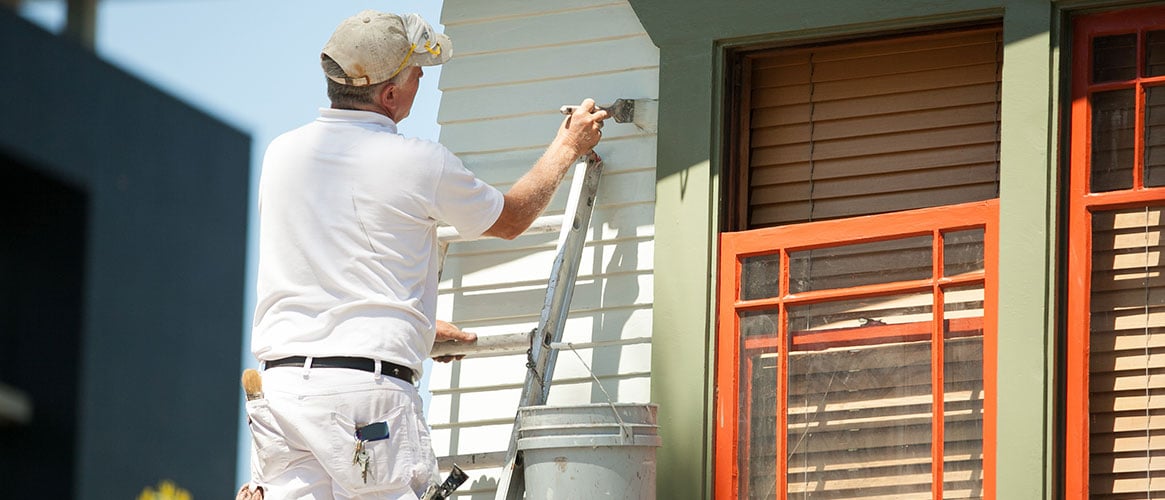Painters risk injury due to heavy physical activity, body positioning, and weather extremes. Painters are also exposed to dust from sanding and hazardous chemicals, such as cleaning products, paints, lacquers, and sealants. And, because painted surfaces can be several stories high, working at heights is common—putting painters at risk of falls. Therefore, it’s important to also include the necessary steps to help them stay safe while working at elevations. These include:
- Inspecting ladders daily
- Setting ladders up properly and using them safely.
- Understanding scaffolding requirements and making sure they are properly installed
- Not using makeshift ladders or scaffolds that could fail and cause a fall.
- Knowing when to use fall protection and how to use it properly.
Physical factors
Painting requires standing for long periods, repetitive movement, and awkward positions. Here are some steps to take to avoid injuries:
- Rotate job tasks during the day.
- Take rest and stretch breaks to prevent fatigue.
- Use our proper lifting techniques checklist to help workers protect themselves from back and other injuries.
- See Shoe Policies for information on using comfortable work boots with non-slip soles. This helps support the feet while the working is standing all day.
Also, be sure to choose the correct tools for the job task. Use tool handles long enough to prevent overreaching. Handles should be soft, non-slip, and fit the hand. Try different models until achieving a comfortable fit.
Environmental factors
Indoors and out, all year long, painting exposes workers to hot and cold weather. Make sure your employees use the proper clothing and take the necessary precautions to protect themselves from exposure to heat illness and cold stress.
Preparing surfaces by sanding and cleaning can expose workers to dust or solvents; protective gloves and respirators may be needed. Some surfaces can contain asbestos, mold, or lead, which require assessment and clean-up by certified abatement professionals before they are prepped for painting. Always practice good hygiene by washing up during and after work. Keep work clothes and shoes separate from non-work clothes to prevent cross-contamination at home.
